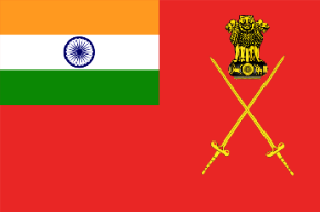NEW DELHI (PTI): In a major shot in the arm for paramilitary and police forces, scientists at a central research institute claim to have developed India's first indigenous medical kit that may ensure protection from serious injuries and faster healing of wounds resulting from nuclear warfare or radioactive leakage.
The kit, developed after two decades of work by the Institute of Nuclear Medicine and Allied Sciences (INMAS) here, has over 25 items, including radio-protectors that provide 80-90 per cent protection against radiation and nerve gas agents, bandages that absorb radiation as well as tablets and ointments.
Developed in India for the first time, it's a potent alternative to similar kits that were till now being procured from strategically advanced nations such as the US and Russia at much higher prices, INMAS Director A K Singh told PTI.
The contents include an advanced form of Prussian blue tablets, highly effective in incorporating Radio Cesium (Cs-137) and Radio Thallium, among the most feared radioisotopes in nuclear bombs that destroy human body cells.
The tablet provides 100 per cent absorption from the gut and other portals of entry to the human body, according to documents inside the medical kit accessed by PTI.
According to INMAS, the kit has been developed for the armed, paramilitary and police forces only as they are the first ones likely to get exposed to radiation -- be it during nuclear, chemical and biomedical (NCB) warfare or a rescue operation after a nuclear accident.
The kit also has an Ethylenediaminetetraacetic acid (EDTA) injection that traps uranium in the guts and blood of victims during a nuclear accident or warfare.
The kit also has Ca-EDTA Respiratory Fluid, which is the inhalation formula for chelation, or grabbing, of heavy metals and radioactive elements deposited in lungs through inhalation at nuclear accident sites.
When EDTA is injected into the veins, it "grabs" heavy metals and minerals and removes them from the body.
The medicine reduces the body burden of radioactivity by 30-40 per cent in controlled conditions and is highly useful for the rescue teams and victims after a nuclear accident.
According to INMAS, different paramilitary forces are processing Memorandums of Understanding (MoUs) with the Institute for seamless procurement of the product.
In some ways, medical and health issues faced by the military and the paramilitary are quite different to that of the general public. The three areas of particular concern to the defence sector are high altitudes, war injuries and NBC warfare," Singh told PTI.
Stating that the pharmaceutical industry is a mere spectator due to the limited commercial scope in such products, Singh said, Government sponsored research is the only way forward in this area with practically no import potential."
"INMAS, the medical face of DRDO (Defence Research and Development Organisation) doubles up for the paramilitary also because there is no medical research in Bureau of Police R&D, he added.
He said the drugs in the medical kit are Made in India', without any foreign counterpart and come with the tag of cost-effective and industrial networking.
Aseem Bhatnagar, additional director at INMAS, noted that the kit has Radioactive Blood Mopping Dressing -- a special kind of bandage that absorbs radiation.
During radioactive accidents, he explained, thousands of patients may be rushed to hospitals. In several cases, if not most, they will also have traumatic, orthopaedic, surgical injuries or burns.
The blood of such patients will have radioactive elements and will require wound dressing with significantly higher absorption capacity so that nothing leaks and infects others.
Such highly absorptive dressings and gauze also make it safer for the medical staff to handle radioactive patients as the chance of their own contamination is reduced, Bhatnagar told PTI.
The kit also has a radioactive urine/biofluid collector which is cost-effective, easy to store and can safely dispose of the urine of a person affected by radiation.
Bhatnagar explained that the collector has silk at its base, more than enough to jellify 500 millilitre of urine, which could be disposed of safely.
The kit has anti-gamma ray skin ointment that protects and heals the radiation damage on the skin.
Also part of the kit is the amifostine injection, a US Food and Drug Administration (FDA) approved conventional radiopharmaceutical that limits damage from gamma radiation.
However, due to a very small market, availability is a major issue.
Another medicine in the form of a tablet is Indranil 150 mg. It is being introduced as a reserve emergency drug for services, rescue workers and places where high acute exposures are expected and lives will be at stake.
Preliminary tests have shown the efficacy of the therapeutic dose and the result shows 80-85 per cent animals may survive at 100 per cent lethal gamma radiation if given as a prophylactic, said Bhatnagar.
While INSAS gets set to ramp up production of the kits for the security forces, doctors at AIIMS feel the kits can be made available to civilians at a later stage.
"Such medicines will help everyone and not just soldiers. This will also help the victims affected in terrorist attacks, Rajesh Malhotra, head of Trauma Centre at All India Institute of Medical Sciences, said, adding that the kits will benefit civilians in case of a nuclear accident.
INMAS develops India's first indigenous anti-nuclear medical kit
Article Posted on : - Sep 13, 2018
Other Related News
Greece signs deal to buy 16 anti-ship missiles from France
Greece has signed a deal to purchase anti-ship missiles from France as it seeks to bolster its defences in a procurement programme aimed mainly at addressing tensions with neighbouring Turkiye.
 Previous Article
Previous Article Next Article
Next Article









The Indian Air Force, in its flight trials evaluation report submitted before the Defence Ministry l..
view articleAn insight into the Medium Multi-Role Combat Aircraft competition...
view articleSky enthusiasts can now spot the International Space Station (ISS) commanded by Indian-American astr..
view article